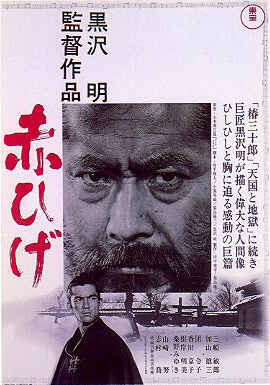 |
| Yuzo Kayama and Yoko Tsukasa in Scattered Clouds |
Cast: Yoko Tsukasa, Yuzo Kayama, Mitsuko Kusabue, Mitsuko Mori, Mie Hama, Daisuke Kato, Yoshio Tsuchiya, Yu Fujiki, Tadao Nakamura. Screenplay: Nobuo Yamada. Cinematography: Yuzuru Aizawa. Production design: Satoru Chuko. Film editing: Eiji Ooi. Music: Toru Takemitsu.
As Scattered Clouds opens, Yumiko Eda (Yoko Tsukasa) is as happy as a married woman can be: Her husband has just had a promotion that will take them from Tokyo to Washington, D.C., and she has just learned that she's pregnant. And then he's killed in an accident and she loses the child. It's a mark of Mikio Naruse's masterly control of tone that he chooses neither to show the accident happening or to make explicit how her pregnancy ended -- whether it was a miscarriage or an abortion. The cause is less important than the effect: Yumiko's utter devastation. And then we switch from her point of view to learn that the driver who killed her husband, Shiro Mishima (Yuzo Kayama), was devastated by the accident in his own way. Although he is exonerated -- he was in no way responsible for the death of Yumiko's husband, the result of a blown-out tire that caused him to lose control of the car -- he suffers at work: His company wants to avoid scandal and transfers him to a less-desirable location. He also suffers from guilt: Desperate to make amends, he arranges to send Yumiko a monthly stipend. She needs the money: Her husband's family coldly distances itself from her, and the insurance isn't enough to live on. But she proudly rejects Shiro's offer, regarding it as "blood money," until it's apparent that she needs it to survive. To that point, Scattered Clouds is a probing look at the nature of grief and guilt. And then melodrama sets in: Shiro's transfer coincidentally puts him in the neighborhood of the inn that Yumiko's sister-in-law runs, and Yumiko takes a job as hostess at the inn. As their plot-crossed paths intersect, Shiro and Yumiko overcome their initial antipathy and fall in love. But what matters in Scattered Clouds is not the familiarity of the tropes of melodrama but the skill with which Naruse, his actors, and his crew -- especially composer Toru Takemitsu -- handle them. It's an irresistible film, no matter how contrived its plot, and if you're not a little teary-eyed when it ends, I feel sorry for you.


